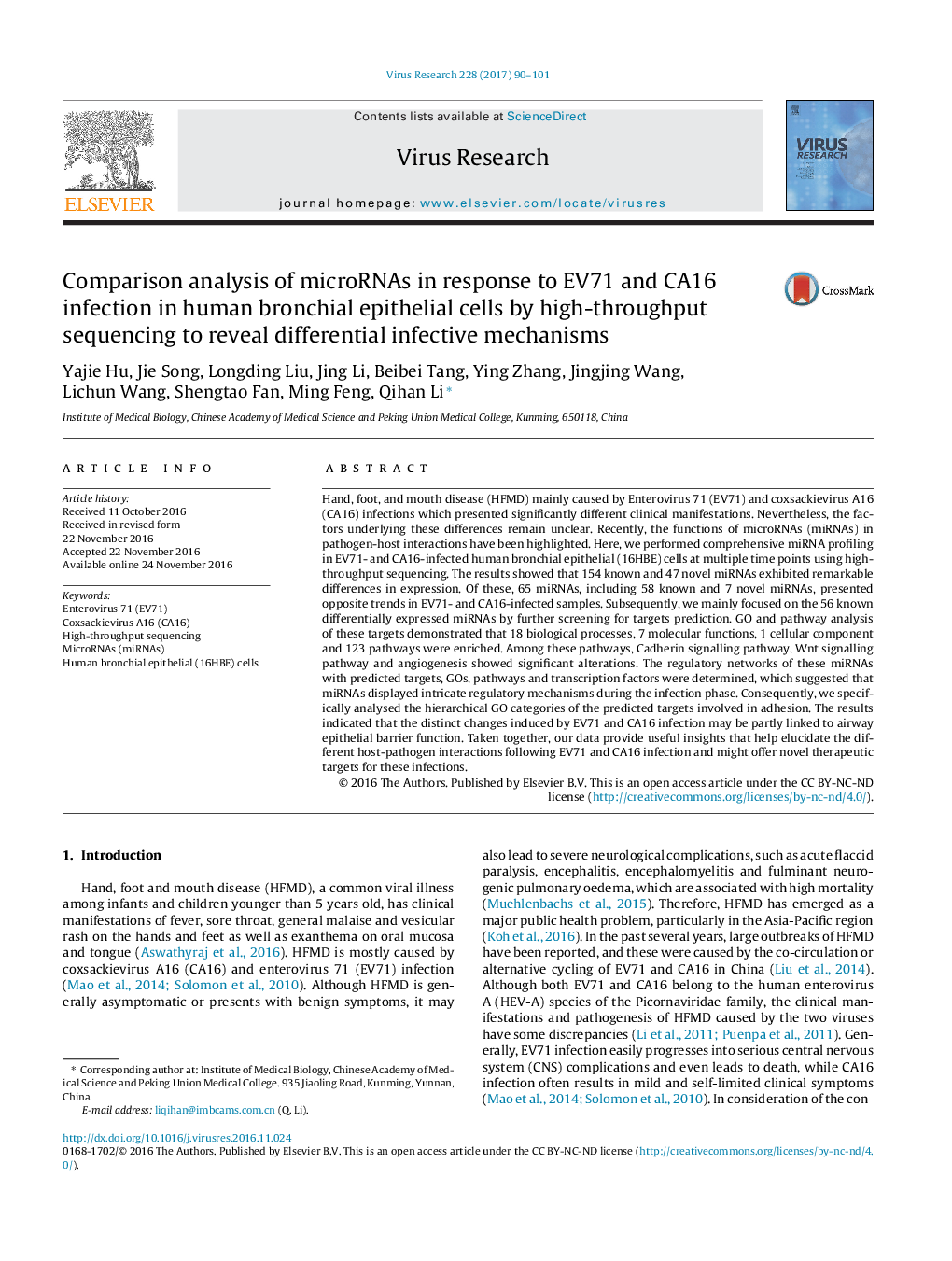| Article ID | Journal | Published Year | Pages | File Type |
|---|---|---|---|---|
| 5675439 | Virus Research | 2017 | 12 Pages |
â¢It was the first report to identify miRNAs that are differentially regulated following EV71 and CA16 infection in 16HBE cells by miRNA sequencing.â¢Our results indicated that the distinct changes induced by EV71 and CA16 infection may be partly linked to airway epithelial barrier function.â¢The 7 novel differentially expressed miRNAs in this study will provide additional insights into host-pathogen interactions and pathogenesis.
Hand, foot, and mouth disease (HFMD) mainly caused by Enterovirus 71 (EV71) and coxsackievirus A16 (CA16) infections which presented significantly different clinical manifestations. Nevertheless, the factors underlying these differences remain unclear. Recently, the functions of microRNAs (miRNAs) in pathogen-host interactions have been highlighted. Here, we performed comprehensive miRNA profiling in EV71- and CA16-infected human bronchial epithelial (16HBE) cells at multiple time points using high-throughput sequencing. The results showed that 154 known and 47 novel miRNAs exhibited remarkable differences in expression. Of these, 65 miRNAs, including 58 known and 7 novel miRNAs, presented opposite trends in EV71- and CA16-infected samples. Subsequently, we mainly focused on the 56 known differentially expressed miRNAs by further screening for targets prediction. GO and pathway analysis of these targets demonstrated that 18 biological processes, 7 molecular functions, 1 cellular component and 123 pathways were enriched. Among these pathways, Cadherin signalling pathway, Wnt signalling pathway and angiogenesis showed significant alterations. The regulatory networks of these miRNAs with predicted targets, GOs, pathways and transcription factors were determined, which suggested that miRNAs displayed intricate regulatory mechanisms during the infection phase. Consequently, we specifically analysed the hierarchical GO categories of the predicted targets involved in adhesion. The results indicated that the distinct changes induced by EV71 and CA16 infection may be partly linked to airway epithelial barrier function. Taken together, our data provide useful insights that help elucidate the different host-pathogen interactions following EV71 and CA16 infection and might offer novel therapeutic targets for these infections.
